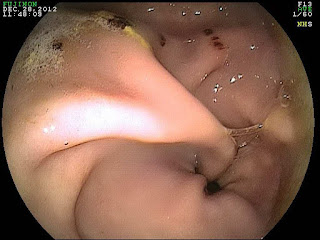It's one word that strikes fear in most horse owners — and for good reason! A horse with no outward signs of distress can find themselves in trouble just a few hours later.
With colic in horses causing significant issues, you may be wondering if there are ways of preventing colic. The good news is yes. With a little work, you can help keep your horse happy, healthy, and hopefully colic-free.
First, let's take a quick look at what colic in horses is and why it happens.
What is Colic?
From horses to humans, colic is a broad term that refers to any abdominal pain.The severity of colic in horses depends on what is causing it. It could be spasmodic colic (or gas colic) caused by excessive gas in your horse's digestion. Or it could be impaction colic with several different causes that are entirely disrupting your horse's digestion.
The severity of colic also dictates a veterinarian's ability to assist. If caught early enough, it may take some medication and slow walks around the barn. If severe, it means going into surgery to remove the impaction.
If your horse is showing the below signs and symptoms of colic, call your vet immediately.
- Rolling or Wanting to Lie Down
- Lack of Appetite
- Lack of Defecation
- Lack of Normal Gut Sounds
- The Appearance of Being Bloated
- Pawing & Signs of Anxiety
- Increased Heart Rate (normal is 28-44 beats/minute)
- Profuse Sweating
Colic is quite common and is a broad term. But, there are some things you can do to help reduce your horse's risk.
Tips for Preventing Colic in Horses
Like most things in the world, colic is not 100% preventable. But, you can go a long way in helping prevent severe colic in your horse.
Stay Consistent With Feed, Portions and Times
A potentially common cause of colic is a sudden change in diet, like food type or portion sizes. While changes in diet are sometimes necessary, it's important not be in a constant state of change.
During these shifts, it's best to switch the diet gradually over the week with incremental increases and changes. Small changes allow your horse's digestion to become accustomed to the new grains and food.
Keep Your Horse Moving and Active
A moving horse is a happy horse. And that unrestricted movement during turnout allows a horse's digestion and intestines to stretch out and do their jobs.
With each step your horse takes while socializing or grazing, the food in their gut is moving as well increasing the rate of breakdown and mobility in their system. A horse that is kept in a stall at all times, will have a hard time moving enough to help boost their digestion.
Always Have Fresh Water for Your Horse
Like moving, water helps your horse's digestion, and with preventing colic.
When a horse (or any animal) becomes dehydrated, digestion becomes harder and more taxing on the animal's system. A horse that is turned out or kept in the stall without access to clean water is at higher risk of impaction, one of the more severe types of colic in horses.
Preventing colic in horses isn't always possible, but the above tips can go a long way in helping keep your horse (and their digestion) happy. Have questions? Think your horse is at risk for colic? Give us a PHD Veterinary Services in Florida a call at 352-258-3571.










